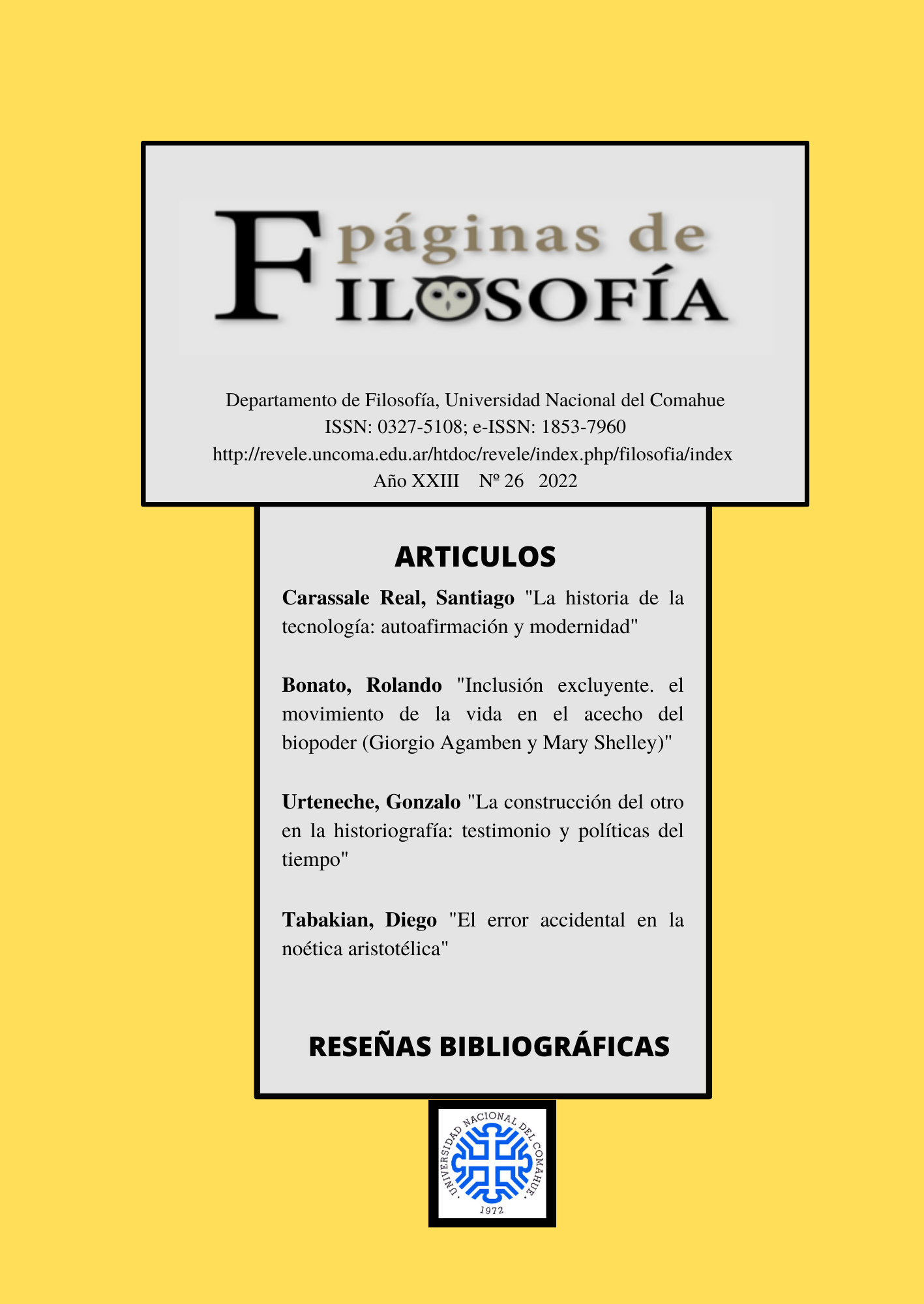Exclusive Inclusion
The life movement and the bio-power stalking (Giorgio Agamben and Mary Shelley)
Keywords:
Literature, Techné, Life, Biopower, Human ConditionAbstract
This article analyzes the possible dialogues between the thought of Giorgio Agamben and the novel Frankenstein by Mary Shelley. Thus, the Italian philosopher describes central aspects that investigate the ways in which biopower captures the life. Indeed, through the concept of the machine –the anthropological, the language and the governmental– the devices capable of returning the power of life to the calculations of power are described. On the other hand, Frankenstein constructs a series of scenes in which the voice of the Thing challenges its creator, Victor Frankenstein, in an ethical dimension due to his negligence and lack of care. The interpellation is directed at a character but, in Agamben's terms, Víctor Frankenstein is part of a larger machine of which he himself ends up being a victim. The fiction also makes explicit the failure of the biopolitical machinery inasmuch as its protagonist affirms himself in life trying to find possible meanings of existence.
Downloads
References
- Agamben, G. (2000 a), Lo que queda de Auschwitch, Valencia, Pre-textos.
- Agamben, G. (2000 b), Homo sacer. El poder soberano y la nuda vida, Valencia, Pre-textos.
- Agamben, G. (2005), Profanaciones, Barcelona, Anagrama.
- Agamben, G. (2006), Lo abierto. El hombre y el animal, Buenos Aires, Adriana Hidalgo.
- Agamben, G. (2014), Pilato y Jesús, Buenos Aires, Adriana Hidalgo.
- Agamben, G. (2017), El sacramento del lenguaje. Arqueología del juramento, Buenos Aires, Adriana Hidalgo.
- Agamben, G. (2018), Polichinela o divertimento para los muchachos, Buenos Aires, Adriana Hidalgo.
- Altamirano, C. y Sarlo, B. (1993), Literatura/Sociedad, Buenos Aires, Edicial.
- Bajtín, M. (1989), Teoría estética de la novela, Madrid, Taurus.
- Bloom, H. (2009), “Frankenstein or the modern Prometeo”, The ringers in the tower: Studies in the romantic tradition, Chicago, University of Chicago Press.
- Brooks. P. (2002), “What is a monster?”, Body work, Cambridge, Harvard University Press.
- Eagleton, T. (2015), Introducción a la novela inglesa, Madrid, Akal.
- Foucault, M. (1973), Esto no es una pipa, Barcelona, Anagrama.
- Giorgi, G. y Rodríguez, F. (2006), Ensayos de biopolítica. Excesos de vida, Buenos Aires, Paidós.
- Heidegger, M. (1959), Carta sobre el humanismo, Madrid, Taurus.
- Heidegger, M. (2003), Ser y tiempo. Madrid, Trotta.
- Hugo, V. (1997), El siglo de las luces, Madrid, Cátedra.
- Johnson, B. (1997), “My monster/myself”, A world of difference, Baltimore and London, Johns Hopkins University Press.
- Kristeva, J. (1988), Poderes del horror, Buenos Aires, Siglo XXI.
- Rancière, J. (2010), El desacuerdo. Política y filosofía, Buenos Aires, Nueva visión.
- Rancière, J. (2011), El malestar de la estética, Buenos Aires, Nueva visión.
- Spivak, G. (2013), Frankenstein: New casebooks, Nueva York. University of Columbia Press.
- Shelley, M. (2010), Frankenstein, Buenos Aires, Gárgola.
Published
How to Cite
Issue
Section
ARK
License
Copyright (c) 2023 Páginas de Filosofía

This work is licensed under a Creative Commons Attribution-NonCommercial-ShareAlike 4.0 International License.




